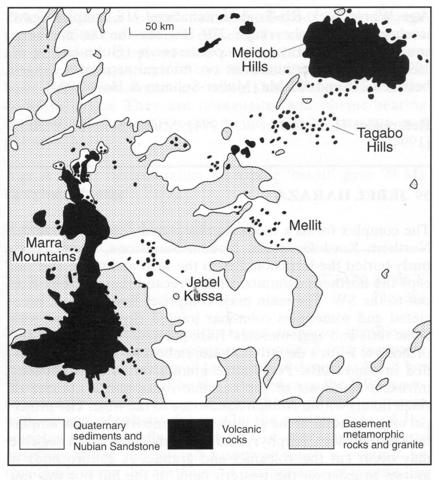stripes
The Marra Mountains comprise an extensive volcanic field extending for some 200 km in a north-south direction and up to 100 km east-west. Basaltic lavas are the most abundant rock type but phonolite, basanite and trachyte are also represented. Deriba is a large caldera situated in the southern part of the field and trachyte spires occur in the northern region. However, a detailed account of the volcanology has not been found. The southern part of the field is divided by Davidson and Wilson (1989) into older and newer series which are divided by an unconformity. The older series includes basalt-hawaiite-mugearite, trachyte and rare phonolite. The younger series rocks comprises lavas, most of which can be traced to discrete cinder cones, that reach a maximum thickness of about 1800 m; the formation of the Deriba caldera represented the climax of the activity. Petrographically the newer series mirrors the older one. Major, trace element and Sr, Nd, Pb and (18O isotope data are given by Davidson and Wilson (1989).
DAVIDSON, J.P. and WILSON, I.R. 1989. Evolution of an alkali basalt-trachyte suite from Jebel Marra volcano, Sudan, through assimilation and fractional crystallization. Earth and Planetary Science Letters, 95: 141-60.

